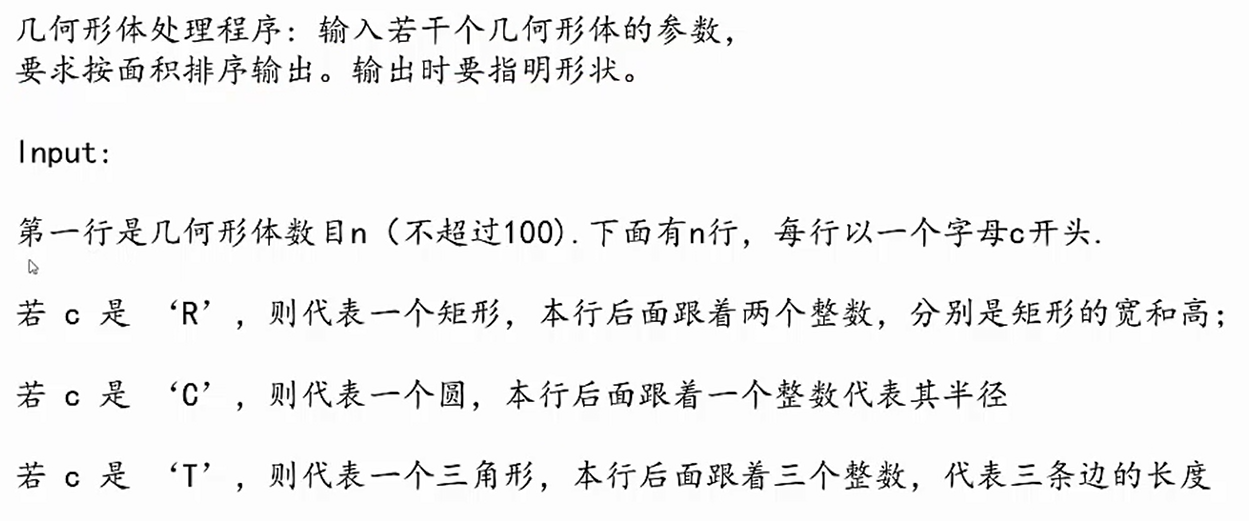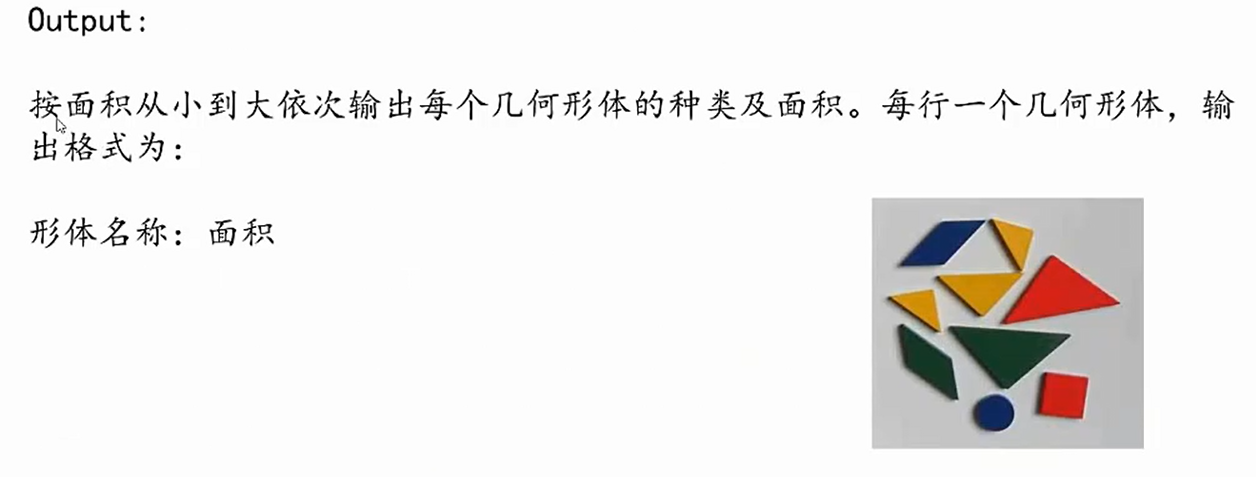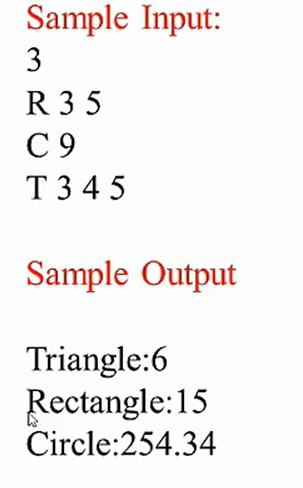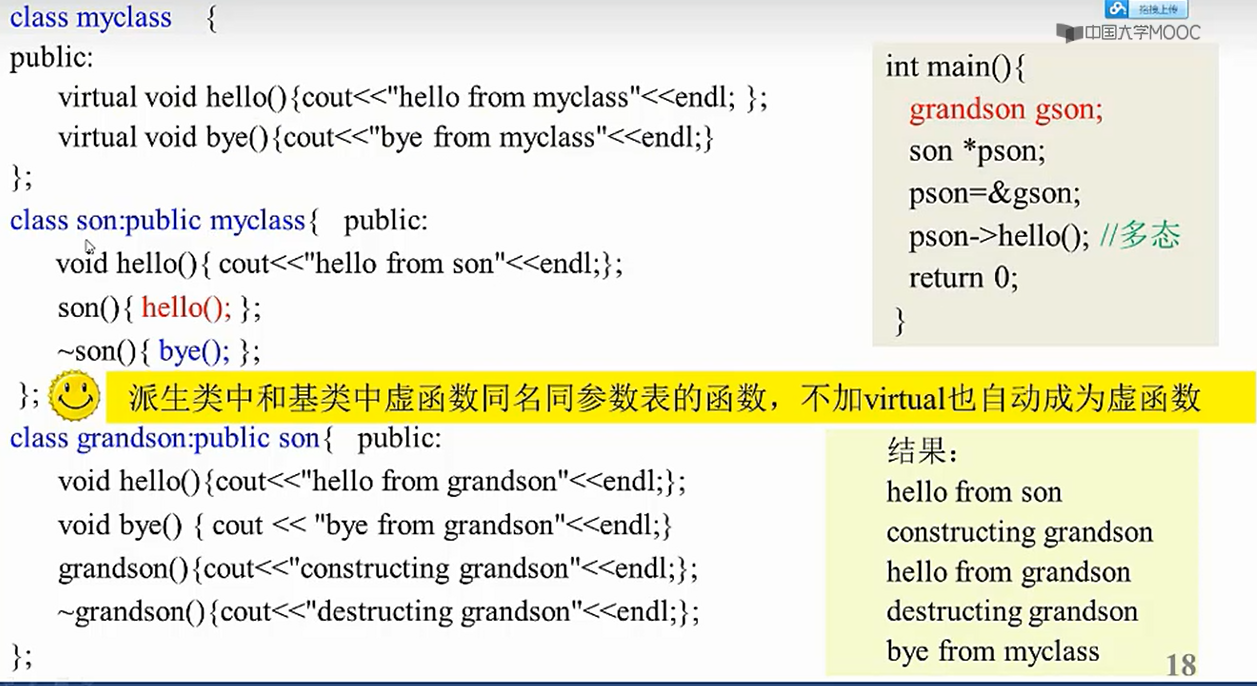几何形体实例



class CShape {public:virtual double Area() = 0; // 纯虚函数virtual void PrintInfo() = 0;};class CRectangle:public CShape {public:int w,h;virtual double Aree();virtual void PrintInfo();};class CCircle:public CShape {public:int r;virtual double Aree();virtual void PrintInfo();};class CTriangle:public CShape {public:int a,b,c;virtual double Aree();virtual void PrintInfo();};
double CRectangle::Area() {return w * h;}void CRectangle::PrintInfo() {cout << "Rectangle:" << Area() << endl;}double CCircle::Area() {return 3.14 * r * r;}void CCircle::PrintInfo() {cout << "Circle:" << Area() << endl;}double CTriangle::Area() {double p = (a+b+c)/2.0;return sqrt(p * (p-a) * (p-b) * (p-c));}void CTriangle::PrintInfo() {cout << "Triangle:" << Area() << endl;}
CShape * pShapes[100];int MyCompare(const void * s1, const void * s2);int main() {int i; int n;CRectangle * pr; CCircle * pc; CTriangle * pt;cin >> n;for(i=0; i < n; ++i) {char c;cin >> c;switch(c) {case 'R':pr = new CRectangle();cin >> pr->w >> pr->h;pShapes[i] = pr;break;case 'C':pc = new CCircle();cin >> pc->r;pShapes[i] = pc;break;case 'T':pt = new CTriangle();cin >> pt->a >> pt->b >> pt->c;pShapes[i] = pt;break;}}qsort(pShapes, n, sizeof(CShape*), MyCompare);for(i=0;i<n;++i)pShapes[i]->PrintInfo();return 0;}
int MyCompare(const void * s1, const void * s2) {double a1, a2;CShape** p1; // s1, s2是void *,不可以写“*s1”来取得s1指向的内容CShape** p2;p1 = (CShape**)s1; // s1,s2指向pShapes数组中的元素,元素类型是CShape*p2 = (CShape**)s2;a1 = (*p1)->Area(); // 多态a2 = (*p2)->Area();if(a1 < a2)return -1;else if(a2 < a1)return 1;elsereturn 0;}
- 如果添加一个新的几何形体,增加的语句只有这个多出来的类
用基类指针数组存放指向各种派生类对象的指针,然后遍历数组,就可以对派生类对象进行各种操作,这是很常用的做法
另一个例子
class Base {public:void fun1() {this->fun2();} // this是基类指针,fun2是虚函数,所以是多态// 所以如果不加this->,执行效果也一样virtual void fun2() { cout << "Base::fun2()" << endl;}};class Derived:public Base {public:virtual void fun2() {cout << "Derived::fun2()" << endl;}}main() {Derived d;Base * pBase = &d;pBase->fun1(); // 输出 Derived::fun2()}
在非构造函数,非析构函数的成员函数中调用虚函数,就是多态
- 否则不是多态。编译的时候即可确定,调用的是自己类或基类中定义的函数,不会等到运行的时候才决定调用自己的还是派生类的函数


